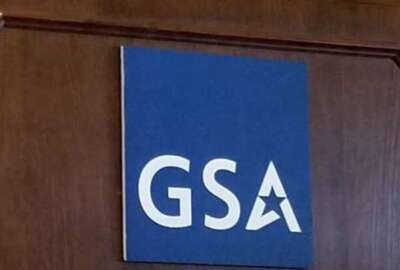Sponsored by Maximus
ONR looks to automation to speed hiring federal hiring process
The Office of Naval Research wants an automated hiring portal to track employees' information during onboarding and offboarding processes.
The Office of Naval Research is developing an automated hiring portal to track its onboarding and offboarding processes, hoping to improve customer experience for both.
ONR, the Navy Department’s main science and technology organization, is constantly looking for new talents all over the world while having the largest total of PhDs in any federal agency, from trained scientists to research professionals.
For now, the customer experience for new hires is somewhere between good and very good, but ONR is still spending a lot of time looking into automation and areas where they can improve, said Curtis Pelzer, the organization’s chief information officer. He said ONR is looking at reducing the time it takes to onboard personnel and providing more information to leadership on why employees are leaving.
“In terms of our onboarding process, a lot of that process is manual. And when we identify a potential hiring candidate, a lot of that initial interaction also happens manually. In terms of all the forms that they need to fill out to become a federal employee or transition from another federal agency, what we’re looking to do is allow them to provide all that information online, through what we’re calling a program or hiring portal. They log in, and they are able to see all the information that they need in terms of completing forms and being able to transmit those forms back to the hiring manager,” Pelzer said on Federal Monthly Insight — Customer Experience in the Department of Defense . “And, then, after the employee has been onboarded to the command, we’d be able to automate the entire lifecycle of that employee. So all those documents that were generated during the hiring process are made available to that employee.”
Information would also be automatically passed on to others in the organization who need to know about the onboarding process, including hiring managers, supervisors, and HR personnel, depending on their roles.
“The system would provide for the individual roles that are needed to make sure that the employee lifecycle is being met, and the things that the employee would need during their tenure. I speak of this in terms of lifecycle, because I believe that there’s a beginning, which is the onboarding process,” Pelzer said. “And then you look at the sustainment of that employee during their tenure, and you look at the offboarding process. That would entail, how do you recover those assets that have been provisioned for the employee? And then how do you successfully offboard that employee, making sure that they have everything that they need when they’re departing the organization?”
Other information in the portal could provide insights into why an employee decides to leave the agency might enhance the automated process in the future,
Prior to the development of the new automated portal, ONR has experienced issues automating processes due to their existing manual process. Originally, they would overlay new technology over the manual process — but would not receive the level of efficiency they were expecting.
Artificial intelligence has also been a conversation at ONR, as they’re working on AI-enabled capabilities. Pelzer said the challenge is identifying what data will be allowed, and making sure the data remains secure, not putting anything at risk.
“We have been looking at using bots using robotic process automation to help streamline routine processes that we believe can be done better by a bot, or using an AI. And most certainly bring a level of efficiency to these processes like onboarding and offboarding of personnel and tracking personnel better,” Pelzer said. “When you look at our data and analytics program, we’re building AI-enabled capabilities every single day. These are taking systems that we’ve already built, and then layering that generative AI on top of that, to be able to better serve our workforce, to give them an additional capability that we previously didn’t have, prior to the advancement of AI.”
ONR is also looking at new ways to track metrics on how many personnel are onboarding and offboarding. Currently, they’re manually capturing these metrics. For Pelzer, looking at metrics provides insight when it comes to a call for resolution and meeting customer needs.
“One thing that’s the most gratifying in terms of customer satisfaction is the messages that I receive from the customer that say, ‘Hey, well done, your team has done something that I didn’t think was possible,’ or the response time, or the level of satisfaction the customer received. So, the metrics certainly give you insight into how well your team is performing. We look at the data, but having those notes that come in is really something that I look forward to,” Pelzer said.
Copyright © 2025 Federal News Network. All rights reserved. This website is not intended for users located within the European Economic Area.
Derace Lauderdale is a digital editor at Federal News Network.






